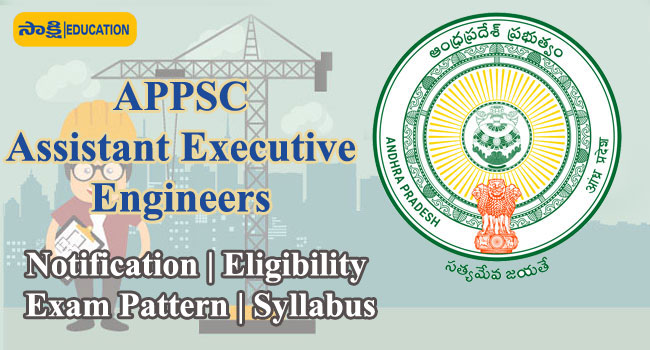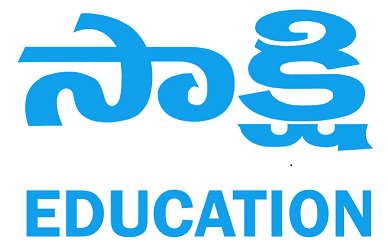APPSC AEE Exam Pattern & Syllabus 2022 - Check Detail Notification!

APPSC AEE Exam Pattern
Exam Standard: Bachelor’s Degree
|
Subject |
Marks |
Questions |
Minutes |
|
PAPER I: General Studies & Mental Ability |
150 |
150 |
150 |
|
PAPER 2: Civil & Mechanical Engineering(Common) |
150 |
150 |
150 |
|
PAPER 3: Civil Engineering |
150 |
150 |
150 |
|
PAPER 3: Civil Engineering |
Negative Marks: As per G.O. Ms. No.235 Finance (HR-I, Plg & Policy) Dept., Dt.06/12/2016, for each wrong answer will be penalized with 1/3rd of the marks prescribed for the question.
APPSC AEE Examination Syllabus
PAPER - I: General Studies & Mental Ability
1. Events of national and international importance.
2. Current affairs - international, national and regional.
3. General Science and it applications to the day to day life Contemporary developments in Science & Technology and information Technology
4. Social- economic and political history of modern India with emphases on Indian national movement.
5. Indian polity and governance: constitutional issues, public policy, reforms and egovernance initiatives.
6. Economic development in India since independence.
7. Physical geography of India sub-continent.
8. Disaster management: vulnerability profile, prevention and mitigation strategies, Application of Remote Sensing and GIS in the assessment of Disaster.
9. Sustainable Development and Environmental Protection
10. Logical reasoning, analytical ability and data interpretation.
11. Data Analysis:
a) Tabulation of data
b) Visual representation of data
c) Basic data analysis (Summary Statistics such as mean and variance coefficient of variation etc.,) and Interpretation
12. Bifurcation of Andhra Pradesh and its Administrative, Economic, Social, Cultural, Political, and legal implications/problems.
PAPER II: Common to Civil and Mechanical Engineering
1. Strength of Material: Forces, moments, Equilibrium; Applying the Equation of Equilibrium, Planar Trusses; Friction. Simple Stresses & Strains: Elasticity and plasticity, Types of stresses & strains, Generalized Hooke’s law–stress –strain diagram for mild steel – Working stress – Factor of safety – Lateral strain, Poisson’s ratio & volumetric strain – Elastic modulii & the relationship between them – Bars of varying section – composite bars – Temperature stresses. Strain energy –Resilience – Gradual, sudden, impact and shock loadings.
Shear Force (S.F) and Bending Moment (B.M): Definition of beam – Types of beams – Concept of shear force and bending moment – S.F and B.M for cantilever, simplysupported and overhanging beams subjected to point loads, U.D.L., Uniformly varying loads and combination of these loads –Point of contraflexure –Relation between S.F., B.M and rate of loading at a section of a beam.
Flexural Stresses: Theory of simple bending -Assumptions – bending equation: Neutral axis –bending stresses –section modulus of different sections –Design of simple beam sections. Shear Stresses: Derivation of formula – Shear stress distribution across various beam sections
Principal Stresses and Strains: Stresses on an inclined section of a bar under axial loading –Compound stresses – Normal and tangential stresses on an inclined plane for biaxial stresses – Two perpendicular normal stresses accompanied by a state of simple shear –Mohr’s circle of stresses – Principal stresses and strains – Analytical and graphical solutions.
Different theories of Failure: Various theories of failure. Columns and struts – Euler’s column theory – types of end conditions; critical load on the column - derivations – Rankin’s formula for columns. Lifting machines, definitions, Law of machine, study of important lifting machines; virtual work principal
Torsion of Circular Shafts: Theory of pure torsion – Torsion Equations: Assumptions made in the theory of pure torsion – Torsional moment of resistance – Polar section modulus – Power transmitted by shafts – Combined bending and torsion and end thrust. Springs Helical and leaf springs Thin & Thick Cylinders and Spherical shells: Thin seamless shells – Formula for longitudinal and circumferential stresses and max shear stresses – hoop, longitudinal and volumetric strains – changes in diameter, and volume of thin shells.
2) Fluid Mechanic and Machinery
Fluid statics: Dimensions and units: physical properties of fluids-specific gravity, viscosity, and surface tension - Vapour pressure and their influence on fluid motion - atmospheric, Pascal’s law, gauge and vacuum pressures – measurement of pressure - Piezometer, U-tube and differential manometers. Hydrostatics, Fluid forces on planes and curved surfaces, submerged and floating bodies, Buoyancy and stability. Fluid kinematics: description of flow pattern and types of fluid flows – Velocity and acceleration: convective, temporal, tangential and normal accelerations, control volume - basic principles of fluid flow, continuity equation for 3-D, 2-D, 1-D flow. Rotational and irrotational motion, Velocity potential, stream function, flow net.
Fluid dynamics: Surface and body forces –Euler’s and Bernoulli’s equations for flow along a stream line and its applications, momentum equation and its applications. Flow measurement devices – Gross measurement: Venturimeter, Orificemeter, Turbine flow meters, Rotameters; Pressure measurement: Pitot tubes, Hot wire/film anemometer, their measurement principles and sources of errors; calibration.
Closed conduit flow: Reynolds experiment - Major and Minor losses in pipes-pipes in series and pipes in parallel-total energy line-hydraulic gradient line, water hammer. Boundary Layer Concepts: Definition, thicknesses, characteristics along thin plate, laminar and turbulent boundary layers boundary layer in transition, separation of boundary layer, submerged objects – Drag and lift.
Basics of turbo machinery: Hydrodynamic force of jets on stationary and moving flat, inclined, and curved vanes, velocity diagrams, work done and efficiency, Hydraulic
Turbines: Classification of turbines, Heads and efficiencies, impulse and reaction turbines, Pelton wheel, Francis turbine and Kaplan turbine-working proportions, work done, efficiencies, hydraulic design – Draft tube theory-functions and efficiency. Performance of hydraulic turbines: Geometric similarity, Unit and specific quantities, characteristic curves, governing of turbines, selection of type of turbine, Cavitation. Centrifugal pumps: Classification, working, work done – barometric head-loss and efficiencies specific speed-performance characteristic curves, NPSH. Selection of pumps and economic evaluation of pumping. Hydraulic Directional Control –Check Valves, Shuttle Valves, two-three- and four-Way Directional Control Valves, Directional Control Valve Actuation. Hydraulic Pressure Control – Pressure Relief Valves, Unloading Valves, Pressure Reducing Valves, Sequence Valves, Counterbalance Valves, Pressure Compensated Pumps.
Hydro Projects And Plant: Classification – Typical layouts – plant auxiliaries – plant operation, pumped storage plants. Hydro Electric Power Plant: Water power – Hydrological cycle / flow measurement – drainage area characteristics – Hydrographs – storage and Pondage – classification of dams and spill ways.
PAPER III: Civil Engineering
1. Building Materials: Timber: Different types and species of structural timber, density – moisture relationship, strength in different directions, defects, preservations, and plywood. Bricks: Types, Indian standard classification, absorption, saturation factor, strength in masonry, influence of mortar strength on masonry strength.
Cement: Compounds of different types, setting times, strength. Cement mortar: Ingredients, proportions, water demand, mortars for plastering and masonry. Concrete: Importance of w/c ratio, strength, ingredients including admixtures, workability, testing for strength, mix design methods, non-destructive testing.
2. Structural Analysis: General theorems: theorems relating to elastic structures, principles of virtual work, strain energy in elastic structures, complementary energy, Castigliano’s theorem, Betti’s and Maxwell’s reciprocal theorems. Analysis of determinate structures – Deflection of determinate beams by double integration Macaulay’s moment area and conjugate beam methods, Analysis of indeterminate skeletal frames-Moment distribution, Slope deflection, Kani’s, Stiffness and force methods, Energy methods, Plastic analysis of indeterminate beams and simple portal frames..
3. Design of Steel Structures: Principles of limit state method. Plastic sections, Design of bolted and welded connections, Design of tension, compression members and beams, axially and eccentrically loaded joints, Simple connection of bracket plates to columns, beam to beam and beam to column connections, design of framed, un-stiffened and stiffened seat connections. Design of industrial roofs. Principles of ultimate load design. Design of simple members.
4. Design of Concrete And Masonry Structures: Limit state design for bending, Shear, Axial compression and combined forces. Codal provision for slabs, Beams, Columns and footings. Principles of pre-stressed concrete design, Materials, Methods of pre-stressing, losses. Design of simple members and determinate structures. Design of brick masonry as per IS codes.
5. Construction Planning and Management: Bar chart, Linked bar chart, Work break down structures, Activity – on – arrow diagrams. Critical path, Probabilistic activity durations, Event based networks. PERT network: Time-cost study, Crashing, Resource allocation.
6. Hydrauics, And Water Resource Engineering: Open Channel flow: types of flows - Type of channels – Velocity distribution – Energy and momentum correction factors, uniform flow and calculation of uniform flow, most economical section, Specific energy, critical flow conditions, critical depth computation, Non-Uniform flow: Assumptions and Equation for Gradually varied flow, types of channel bottom slopes, classification of surface profiles. Rapidly varied flow, hydraulic jump, energy dissipation. Hydraulic Similitude: Dimensional analysis-Rayleigh’s method and Buckingham’s pi theorem- –Geometric, kinematic and dynamic similarities - dimensionless numbers – model and prototype relations. Distorted and non-distorted models. Hydrological cycle and its components, Precipitation and related data analysis, Evaporation and transpiration; S-hydrograph, Unit hydrographs. Floods and their management, Probable maximum Flood; Streams and their gauging; Routing of floods; Capacity of reservoirs. Multipurpose uses of water; Soil-Plant-Water relationships, Irrigation systems, Water demand assessment; Storages and their yields, Ground water yield and well Hydraulics; Water logging, drainage design. Design of rigid boundary canals, Lacey’s and tractive force concepts in canal design, Lining of Canals, Sediment transport in canals, Non-overflow and overflow section of gravity dams and their design, Energy dissipaters, tail water rating; Design of head works, Distribution works, Falls, Crossdrainage works, Outlets, River training.
7. Environmental Engineering: Water Supplying Engineering: Sources of supply, Yields, Design of intakes and conductors, Estimation of demand. Water quality standards, Control of water borne diseases. Primary and secondary treatment. Conveyance and distribution systems of treated water, Leakages and control. Rural water supply. Institutional and industrial water supply. Waste Water engineering: Urban rain water disposal, Systems of sewage collection and disposal. Design of sewers and sewerage systems, Pumping. Characteristics of sewage and its treatment. Disposal of products of sewage treatment. Plumbing systems. Rural and semi-urban sanitation. Solid Waste Management: Sources and effects of air pollution, Monitoring of air pollution, Noise pollution, Standards, Ecological chain and balance. Environmental impact assessment.
8. Soil Mechanics And Foundation Engineering: Properties and classification of soil, Compaction, Permeability and Seepage, Flow nets, Compressibility and consolidation. Stress distribution in soils, Shearing resistance, Stresses and failure. Soil testing in laboratories and in-situ, Earth pressure theories, Soil exploration. Types of foundations, Selection criteria, bearing capacity, Settlement, laboratory and field tests, Design of shallow foundations. Types of piles and their design and layout. Foundations on expansive soils.
9. Surveying And Transport Engineering: Classification of surveys, Scales, Accuracy, Measurement of distances, Direct and indirect methods, Optical and electronic devices, Measurement of directions, Prismatic compass, Local attraction, Theodolites, Types, Measurement of elevations, Spirit and trigonometric leveling, Contours, Digital elevation modeling concept, Establishment of control by triangulations and traversing, Measurement and adjustment of observations, Computation of coordinates, Field astronomy, Concept of global positioning system, Map preparation by plane tabling and by photogrammetry, Remote sensing concepts, Map substitutes. Planning of Highway systems, Alignment and geometric design, Horizontal and vertical curves, Grade separation, Highway Materials and construction methods for different surfaces and maintenance. Principles of pavement design, Drainage. Traffic surveys, Intersections, Signaling, Mass transit systems, Accessibility, Networking.
Paper-III: Mechanical Engineering
1. Thermodynamics: Definition of system & control volume, properties and state of a substance, units of mass, length, time, force, energy and work; Equality of temperature, Zeroth Law; Properties of Pure Substances – Pure substance; phase change and phase equilibrium; properties tables and diagrams; Ideal gas law, deviation from ideal law and compressibility factor; Work & Energy – Definition of work and energy; First Law of Thermodynamics; internal energy, enthalpy and specific heat of gases, liquids and solids; energy analysis of closed system; mass and energy analysis of control volumes; Second law of Thermodynamics – Thermal efficiency and coefficient of performance; Kelvin-Planck and Clausius statements and their equivalence; reversibility and its departure; Carnot cycle; thermodynamic temperature scale; Entropy – Clausius inequality; entropy change for pure substance; entropy generation and principle of entropy increase; entropy change for reversible process; entropy change for ideal gases; Energy – Work potential of energy; reversible work and irreversibility; Second Law efficiency; Energy change of a system; Energy transfer by heat, work and mass; Energy balance for closed system and control volumes; Power & Refrigeration Cycles – Air standard power cycles: Otto Cycle, Diesel Cycle, Stirling & Ericsson Cycle; Brayton Cycle and its variants; Second law analysis of gas power cycles; Rankine Cycle and its variants; Vapour Compression Cycle; Second law analysis of vapour power cycles.
2. Heat Transfer: Steady state conduction in one and two-dimensional systems – one dimensional unsteady state conduction; analytical and numerical methods. Extended surface heat transfer (Fins). Convection: Basic equations, Dimensional analysis, Boundary layers; Forced convections: External and internal flows, correlations, Natural convection and Mixed convection. Design of heat exchangers: LMTD and NTU methods. Radiation heat transfer: Basic laws, properties of surfaces, view factors, network method and enclosure analysis for gray – diffuse enclosures containing transparent media, engineering treatment of gas radiation; boiling and condensation.
3. Refrigeration and Air Conditioning: Refrigerating machines, heat pump, vapour compression system, second law efficiency of vapour compression cycle, refrigerants – selection of a refrigerant; thermodynamic, chemical and physical requirements, substitutes of CFC refrigerants; Multi-stage systems, components of a refrigerator – Compressor, condensers, expansion devices, evaporators; Gas cycle refrigeration; Vapour absorption. system; Properties of moist air and psychometric chart; Psychrometry of airconditioning processes; solar radiation, heat transfer through buildings and load calculations; Component design of air-conditioning units.
4. Turbomachines: Dimensional analysis – incompressible and compressible fluid analysis, performance characteristics for low and high speed machines, cavitation; 2D Cascades – cascade geometry, flow characteristics, forces, performance, turbine cascades; Axial flow turbines – mean line analysis, velocity vector diagram, thermodynamic analysis, multistaging and losses per stage of axial turbines, effect of reaction on efficiency, turbine blade cooling; axial compressor – mean line analysis, velocity diagram, thermodynamic analysis, multistage analysis, high Mach number compressors, stall and surge phenomenon; Centrifugal Pumps, fans and compressors – their definitions and differences, Thermodynamic analysis, diffuser performance, slip factor, Performance analysis, chocking in a compressor; Hydraulic Turbines – Pelton, Francis and Kaplan turbines, cavitation.
5. Theory of Machines
Basic Kinematic concepts: Introduction to mechanisms, Links, Kinematic pairs, Kinematic chains, Mechanism and Inversions, Kennedy’s theorem, Velocity and acceleration in mechanism, Relative velocity methods, Instantaneous center of rotation, Acceleration diagram, Acceleration center. Cams: Synthesis of translating flat-face, translating roller and oscillating roller follower cams. Gears: terminology, fundamental law of gearing, involute profile, Interference and undercutting, minimum number of teeth, contact ratio, bevel, helical, spiral and worm gears, Gear Trains – simple, compound and epicyclic gear trains; sliding gear boxes and synchronous gear boxes.
Dynamics of machines: Dynamics of Rigid Bodies in Plane Motion; Dynamic Force Analysis of Machines. Balancing of inertia forces: Balancing of rotors, balancing of inline internal combustion engines. Friction Devices: Introduction to friction, Belt, chain and rope drive, Transmission of Power through friction clutch.
6. Machine Design: Design consideration – limits, fits, tolerances, and standardization, a brief introduction to strength of materials, modes of failure, failure theories, design of shafts under static and fatigue loadings, design of springs – helical, compression, tension, torsional and leaf springs, design of joints – threaded fasteners, preloaded bolt joints, welded and glued joints, design and analysis of sliding and rolling contact bearings, analysis and applications of power screws and couplings, analysis of clutches and brakes, design of belt and chain drives, design of spur and helical gears.
7. Machine Drawing and Solid Modelling: Principle of drawing. Introduction to machine drawing, production drawing, assembly drawing. Different sectional views. Fits, limits, tolerances and surface finish. Introduction to computer aided design, fundamentals of computer graphics; geometric modelling of synthetic curves: Hermite, Bezier, B-spline, NURBS. Parametric representation of surfaces: plane, ruled, revolution; Part modelling techniques: wireframe, surface and solid modelling, data representation and exchange formats, geometry and topology. Three-dimensional transformations and projections. Solid modelling of different machine elements. Example, threads, bolts and nuts, welded and riveted joints, shafts, keys, cotter and pin joints; couplings and clutches, springs, belts and pulleys; bearings, gears. Assembly of different components of IC engine.
8. Engineering Materials: Concepts of metallurgy and materials science, types of materials (metals, ceramics, polymers, hybrids), material properties (structural and functional), application orientated material design, some case studies: biomaterials, automotive, aerospace, etc. Structure of metals, Determination of structure and chemical composition, concepts of alloys, phase and phase diagrams. Imperfections in crystals-point defects, dislocations and voids, theory of dislocations, strengthening mechanisms, diffusion in solids, heat treatments and phase transformations, mechanical response and microstructure-property relationship.
9. Manufacturing Science: Introduction to Manufacturing and its evolution, Net and near-net shape manufacturing; Metal Casting: Solidification of Alloys and its mechanism, Gating System Design and Estimation of Solidification time, Riser Design and Riser Placement, Process Variations, Defects and Product Design; Metal Forming: Mechanism of plastic deformation, fundamentals of plasticity, Introduction to Force equilibrium method, State of Stress and boundary conditions in Upsetting/forging, Rolling, Wire and tube drawing, Extrusion and Deep Drawing, Defects, Load estimation for one plane strain and one axisymmetric bulk deformation processes, Analysis of Deep Drawing and Bending, Introduction to High velocity forming processes; Powder Processing (Metalsand Ceramics), Polymer Part Manufacturing, Introduction and properties of polymer melts and Visco-elasticity, Processing of Thermoplastics (Extrusion, Injection Molding, Blow Molding, Rotational Molding) and Thermosets (compression and transfer molding), Tool and product design principles; Rapid Manufacturing: Need for Rapid Prototyping/Rapid Tooling/Rapid Manufacturing, Introduction to Processes for Prototyping, Tooling and Manufacturing; Joining and Welding: Introduction, Solid State and Fusion Joining, Brazing and Soldering, Mechanical and Adhesive Joining, Metal and nonmetal joining; Metrology: Tolerancing (Dimensional and Geometric) principles and their measurements (Geometrical tolerances using point data), Interferometry – principles, flatness testing using optical flat, optical interferometers. Conventional Removal and Finishing Processes: Importance of Material Removal and allied processes, classification; Chip Formation; Types of Chips; Tool Specification: Coordinate and Orthogonal Systems; Mechanics of Metal Cutting: Merchant’s Circle Diagram, Stress, Strain and Strain Rate, determination of Shear Plane Angle; Tool Wear and Tool Life; Variables affecting Tool Life; Practical Machining Operations: Turning, drilling, milling; Finishing Operations: Grinding (MRR estimation, Wheel Specifications, Wheel Wear) and other processes; Economics of machining: Minimum Production Cost Criterion, Maximum Production Rate and Maximum Profit Rate Criteria; Unconventional Removal and Finishing Processes: Abrasive Jet Machining, Ultrasonic Machining; Electro Discharge Machining; Abrasive Jet Machining; Electron Beam Machining; Laser Beam Machining, Finishing processes (AFM and other variants); Miniaturization and its importance, Micro-Manufacturing Processes (Additive, formative and Removal), Scaling laws with emphasis on micro-Manufacturing.
10. Computer Integrated Manufacturing: Current developments in CAD- feature based modeling, design by feature, function, feature linkages, application of feature based models, parametric modeling; Computer Aided Manufacturing: fundamentals of part programming, path generation, post processing and verification; Group Technology, Computer aided process planning (CAPP), computer aided inspection and reverse engineering,manufacturing process simulation, virtual and distributed manufacturing, computer integrated manufacturing.
11. Industrial Engineering: Basics of probability and statistics, Linear Programming and applications, Queuing theory and its applications, forecasting approaches, Monte Carlo simulation procedure. Inventory models discussion (deterministic and probabilistic Models), News vendor model, Inventory Planning and Control, Decision support system tools, Economic Order Quantity (EOQ). Product Design: Design for Manufacture and Assembly (DFMA), Concurrent engineering Work systems design: Work study and classifications, Method study – work measurement, work sampling, Cost Estimation, Calculation of Machining Times, Cost Depreciation, Productivity, Productivity Measurement, Time study, Recording Techniques for Work Study, Information Collection Techniques, Job Evaluation, Ranking system, Incentive Schemes, Individual Group-Company-wide Bonus Schemes, Behavioural aspects of Incentives Plant layout, Ergonomics, CRAFT, Cellular Manufacturing, Scheduling, Assembly Line Balancing, Future directions in Production. Quality management and control: Quality Improvement, Cost of Quality, Statistical Process Control, Central Tendency and Dispersion, Control Charts, Acceptance Sampling, New Quality Concepts, Taguchi Methods, Design of Experiments (DoE), Robust Design, Ishikawa Diagram, ISO certification, Kaizen, Zero Defects Program, Total Quality Management (TQM), Six Sigma; Maintenance Management: Preventive and breakdown maintenance approaches, reliability, Work study for Maintenance, Total Productive Maintenance (TPM), Spare Parts Management, Characteristics and classification of Spare parts; Supply Chain design, scheduling, layout design: Materials Requirement Planning (MRP), MRP-II, Enterprise Resource Planning (ERP), Logistic, Distribution and Supply chain Management, Applications of News vendor model in supply chain.
12. Modelling and Simulation: Introduction to modelling and simulation, introduction to symbolic and numerical computations, degrees of freedom, modelling in dependent and independent coordinates, Lagrange equations, state space formulation, Newton-Raphson method, explicit integrator, implicit integrator, dynamics of constrained mechanical systems as differential algebraic equations, Baumgaurte stabilization, Gauss principle, and inverse problems.
APPSC Recruitment 2022 AEE - Important Dates:
- Opening date for receipt of online application: October 26, 2022
- Closing date for receipt of online application: November 15, 2022
APPSC Recruitment 2022 AEE Details Notification 2022: Click Here


















